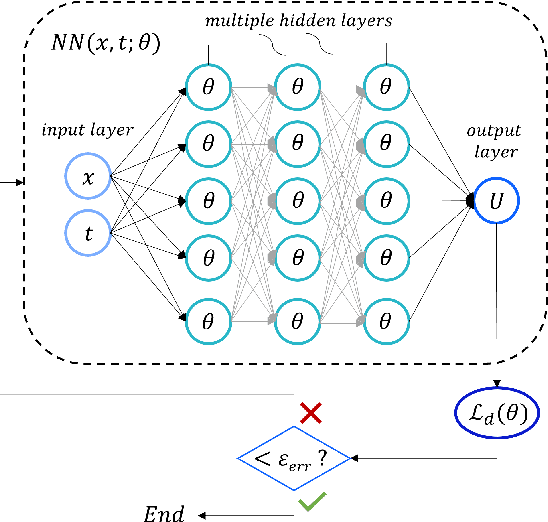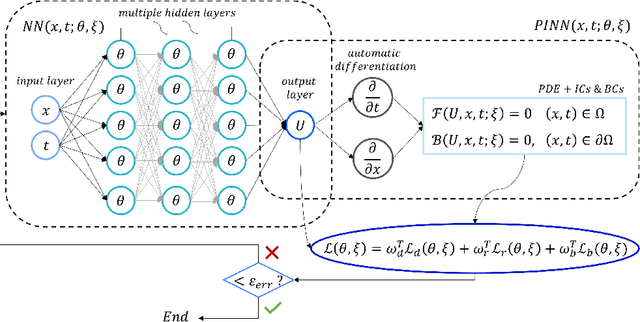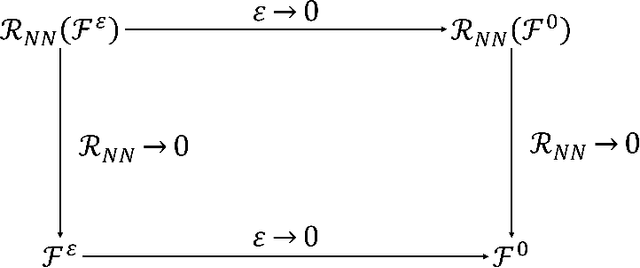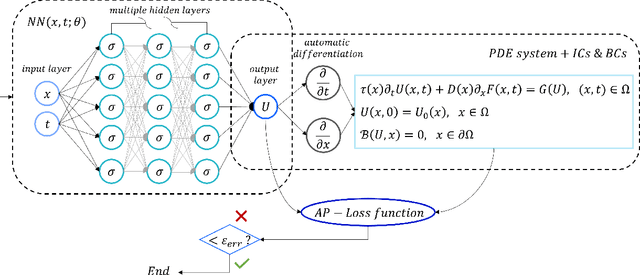Giulia Bertaglia
Asymptotic-Preserving Neural Networks for hyperbolic systems with diffusive scaling
Oct 17, 2022



Abstract:With the rapid advance of Machine Learning techniques and the deep increment of availability of scientific data, data-driven approaches have started to become progressively popular across science, causing a fundamental shift in the scientific method after proving to be powerful tools with a direct impact in many areas of society. Nevertheless, when attempting to analyze the dynamics of complex multiscale systems, the usage of standard Deep Neural Networks (DNNs) and even standard Physics-Informed Neural Networks (PINNs) may lead to incorrect inferences and predictions, due to the presence of small scales leading to reduced or simplified models in the system that have to be applied consistently during the learning process. In this Chapter, we will address these issues in light of recent results obtained in the development of Asymptotic-Preserving Neural Networks (APNNs) for hyperbolic models with diffusive scaling. Several numerical tests show how APNNs provide considerably better results with respect to the different scales of the problem when compared with standard DNNs and PINNs, especially when analyzing scenarios in which only little and scattered information is available.
Asymptotic-Preserving Neural Networks for multiscale hyperbolic models of epidemic spread
Jun 25, 2022



Abstract:When investigating epidemic dynamics through differential models, the parameters needed to understand the phenomenon and to simulate forecast scenarios require a delicate calibration phase, often made even more challenging by the scarcity and uncertainty of the observed data reported by official sources. In this context, Physics-Informed Neural Networks (PINNs), by embedding the knowledge of the differential model that governs the physical phenomenon in the learning process, can effectively address the inverse and forward problem of data-driven learning and solving the corresponding epidemic problem. In many circumstances, however, the spatial propagation of an infectious disease is characterized by movements of individuals at different scales governed by multiscale PDEs. This reflects the heterogeneity of a region or territory in relation to the dynamics within cities and in neighboring zones. In presence of multiple scales, a direct application of PINNs generally leads to poor results due to the multiscale nature of the differential model in the loss function of the neural network. To allow the neural network to operate uniformly with respect to the small scales, it is desirable that the neural network satisfies an Asymptotic-Preservation (AP) property in the learning process. To this end, we consider a new class of AP Neural Networks (APNNs) for multiscale hyperbolic transport models of epidemic spread that, thanks to an appropriate AP formulation of the loss function, is capable to work uniformly at the different scales of the system. A series of numerical tests for different epidemic scenarios confirms the validity of the proposed approach, highlighting the importance of the AP property in the neural network when dealing with multiscale problems especially in presence of sparse and partially observed systems.
 Add to Chrome
Add to Chrome Add to Firefox
Add to Firefox Add to Edge
Add to Edge